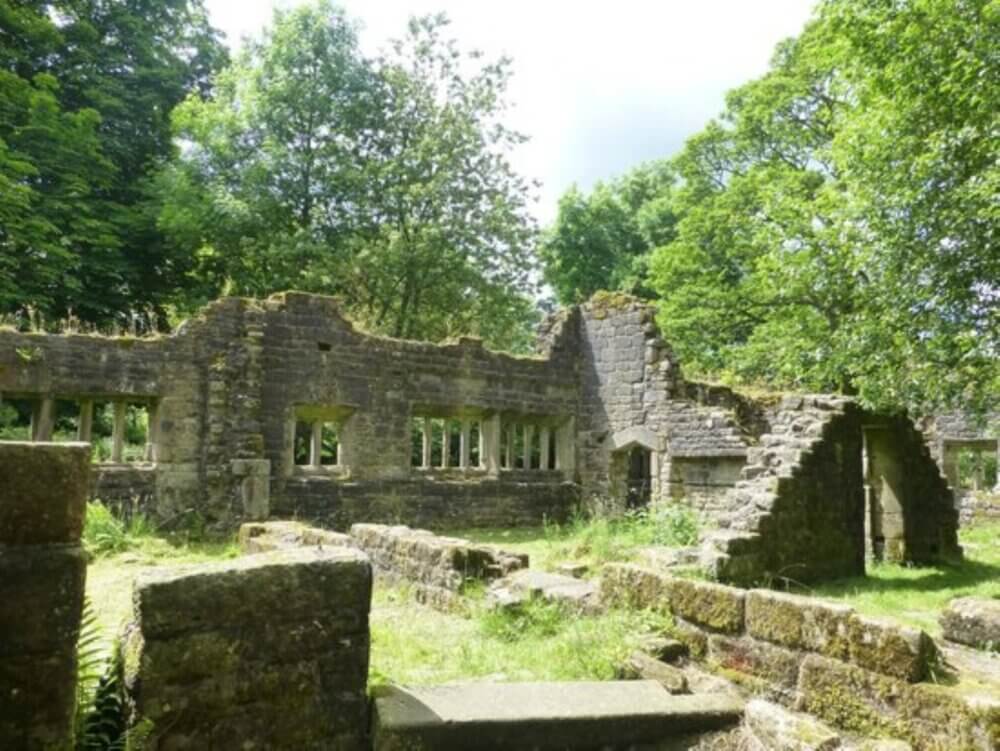Best places for a stroll across Burnley
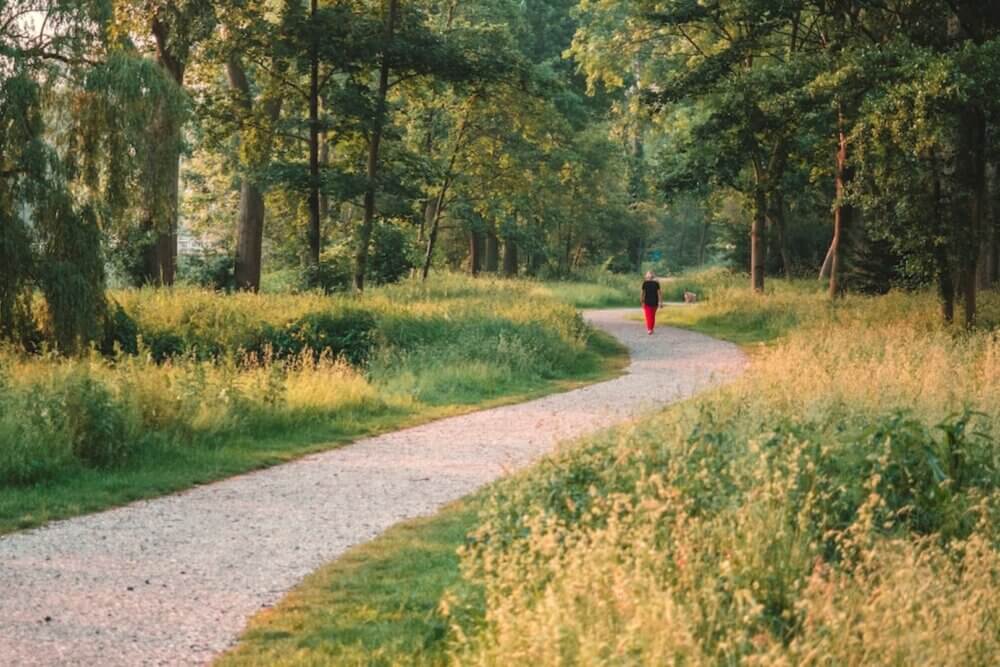
The Singing Ringing Tree and Crown Point
This unique walk takes you to the Singing Ringing Tree, a musical sculpture, and then leads you to Crown Point, providing stunning panoramic views of the surrounding countryside. Designed by architects Mike Tonkin and Anna Liu, the Singing Ringing Tree is made of galvanized steel pipes of varying lengths and sizes. It is shaped like a tree bent by the wind, standing at 3 metres (10 feet) tall. The sculpture is not just a visual spectacle but also an acoustic one. The pipes of the Singing Ringing Tree are carefully tuned to produce harmonic sounds when the wind blows through them. As the wind passes through the pipes, it creates eerie and melodic sounds, which give the sculpture its name. The sounds vary depending on the wind speed and direction, resulting in a unique and ever-changing musical experience. Besides the musical aspect, the Singing Ringing Tree offers stunning panoramic views of Burnley and the surrounding countryside. It is a fantastic vantage point for taking in the natural beauty of the area. Visitors can reach the Singing Ringing Tree by embarking on a walk from various starting points, such as Towneley Park or Crown Point Road. The walk takes you through scenic landscapes and offers a chance to explore the beauty of the area while heading towards the sculpture. The Singing Ringing Tree has become a popular attraction for both locals and tourists, drawing people with its unique design and captivating sounds. It has received international recognition and accolades for its innovative combination of art, architecture, and music.
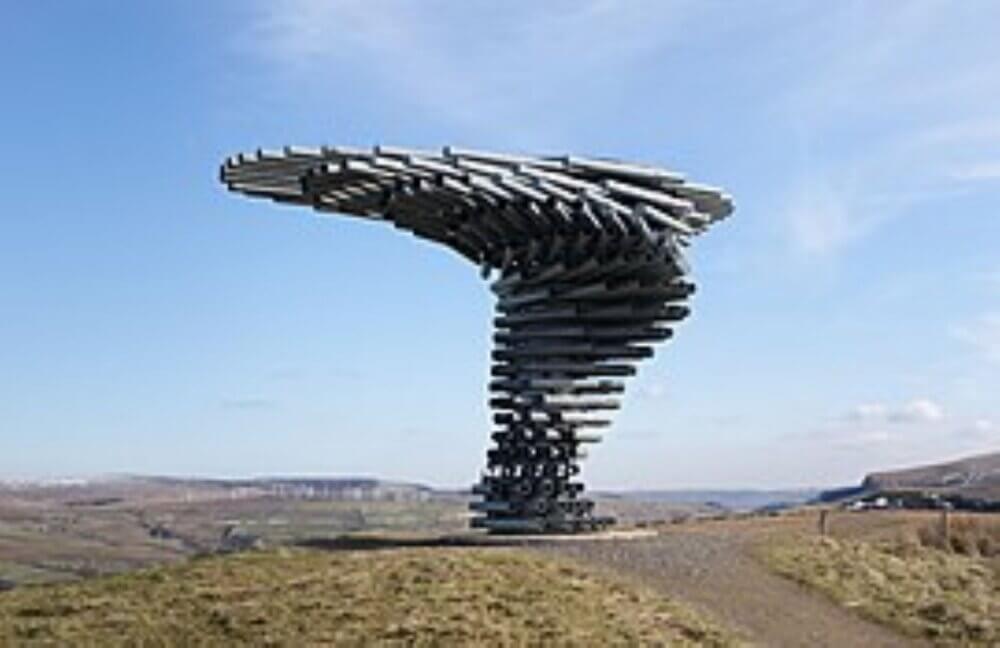
Towneley Park and Woodland Walk
Explore the beautiful grounds of Towneley Park, which includes a mix of formal gardens, woodlands, and open spaces, offering a pleasant walk with a historic backdrop. The park covers an impressive 180 acres and was originally part of the Towneley Hall estate, which has a rich history dating back to the 14th century. The Towneley family, who were prominent landowners, resided in Towneley Hall, which now serves as a museum and art gallery. The park has several woodland areas where visitors can explore nature trails surrounded by mature trees, providing a peaceful and tranquil environment. The park includes playgrounds for children to enjoy, with various play equipment and ample space for recreational activities. There are also sports facilities, such as football fields and tennis courts, for those looking to engage in outdoor sports. Adjacent to the park is the historic Towneley Hall, which houses a museum and art gallery. Visitors can explore the exhibits showcasing local history, archaeology, natural history, and a collection of artworks. Throughout the year, Towneley Park hosts a range of events and festivals, including outdoor concerts, theatrical performances, and community celebrations. These events add vibrancy and entertainment to the park. The park is home to diverse wildlife, including birds, squirrels, and other small mammals. Nature enthusiasts can enjoy birdwatching and observe the flora and fauna within the park. There is ample parking around the park which can be found here.
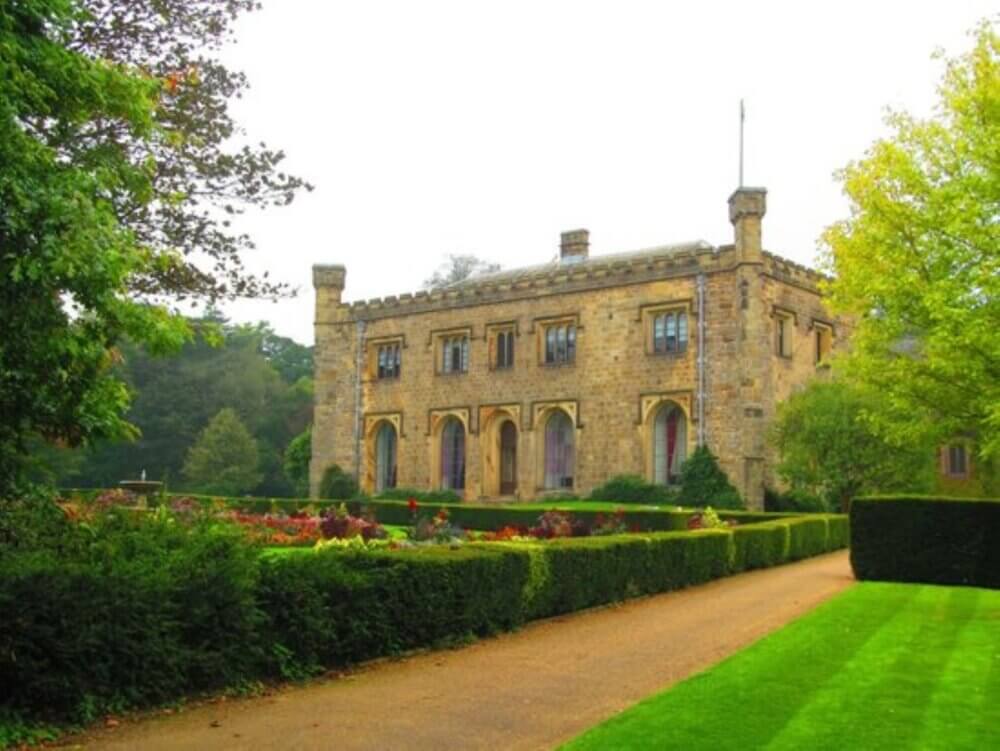
Pendle Hill Circular Walk:
Embark on a challenging but rewarding circular walk around Pendle Hill, passing through scenic landscapes and enjoying views of the surrounding area. Pendle Hill is situated in the Forest of Bowland Area of Outstanding Natural Beauty, near the towns of Burnley, Clitheroe, and Nelson in Lancashire. The circular walk around Pendle Hill is approximately 9 miles long (14.5 kilometers). The duration of the walk can vary depending on your pace and stops along the way but generally takes around 4-5 hours to complete. The circular walk typically starts and ends in the village of Barley, which serves as a popular starting point for hiking Pendle Hill. The route takes you through scenic countryside, woodlands, and moorlands, offering panoramic views of the surrounding area. The highlight of the walk is reaching the summit of Pendle Hill, which stands at 557 meters (1,827 feet) above sea level. From the top, you can enjoy breathtaking vistas of the Forest of Bowland, the Ribble Valley, and the Lancashire countryside. Pendle Hill is infamous for its association with the Pendle Witch Trials of 1612. The area has a rich history, and you can learn about the witchcraft trials through information boards along the route. The Pendle Hill Circular Walk follows well-defined paths, with sections that can be steep and rugged. It is advisable to wear appropriate hiking boots and carry essential supplies such as water, snacks, and weather-appropriate clothing. As you walk around Pendle Hill, you’ll have the opportunity to observe diverse flora and fauna. Keep an eye out for birds, including peregrine falcons and curlews, as well as wildflowers and heather in the summer months. Before or after your walk, take the time to explore the picturesque village of Barley. It offers amenities such as parking, cafes, and a visitor centre where you can gather information about the trail and the surrounding area. Like any outdoor activity, it’s important to check the weather forecast before setting out on the Pendle Hill Circular Walk. Be prepared for changing weather conditions, as the hilltop can be windy and exposed. Ensure that you are adequately prepared for the walk, have a map or guidebook, and inform someone about your plans. It’s also advisable to stay on marked paths and take necessary precautions while hiking. Parking is available in Barley and can be found here.
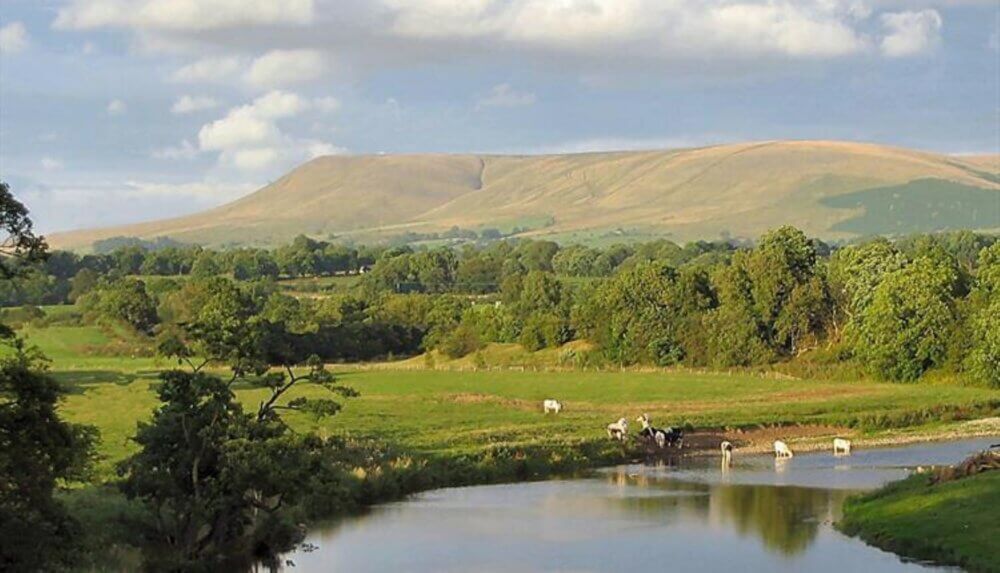
The Weavers' Triangle and Leeds and Liverpool Canal
Discover the industrial heritage of Burnley by exploring the Weavers’ Triangle, a preserved area of traditional Victorian industrial buildings. Continue the walk along the Leeds and Liverpool Canal, enjoying the tranquil waterside scenery. The Weavers’ Triangle was once the heart of Burnley’s weaving industry during the 19th century. The area was home to numerous weaving mills, handloom weavers’ cottages, and associated infrastructure. The Weavers’ Triangle is characterized by its well-preserved historic buildings. As you walk through the area, you’ll encounter restored warehouses, weaving sheds, and workers’ cottages that reflect the architectural heritage of the textile industry. Located adjacent to the Weavers’ Triangle, Queen Street Mill Textile Museum is a notable attraction. It showcases a working steam-powered weaving mill, providing insights into the process and machinery used in the textile industry. The Weavers’ Triangle Visitor Centre, housed in an old weaving shed, offers information and exhibitions about the history and significance of the area. It serves as a starting point for the walk, providing maps and guides. The Weavers’ Triangle features various sculptures and artworks that celebrate the industrial heritage of the area. Look out for pieces that commemorate the textile industry and pay tribute to the workers. The walk often incorporates the scenic towpath alongside the Leeds and Liverpool Canal. You can enjoy a leisurely stroll, observing the canal boats, locks, and wildlife along the way. Throughout the year, the Weavers’ Triangle hosts various events and festivals celebrating Burnley’s industrial heritage. These events provide additional opportunities to engage with the local history and culture.
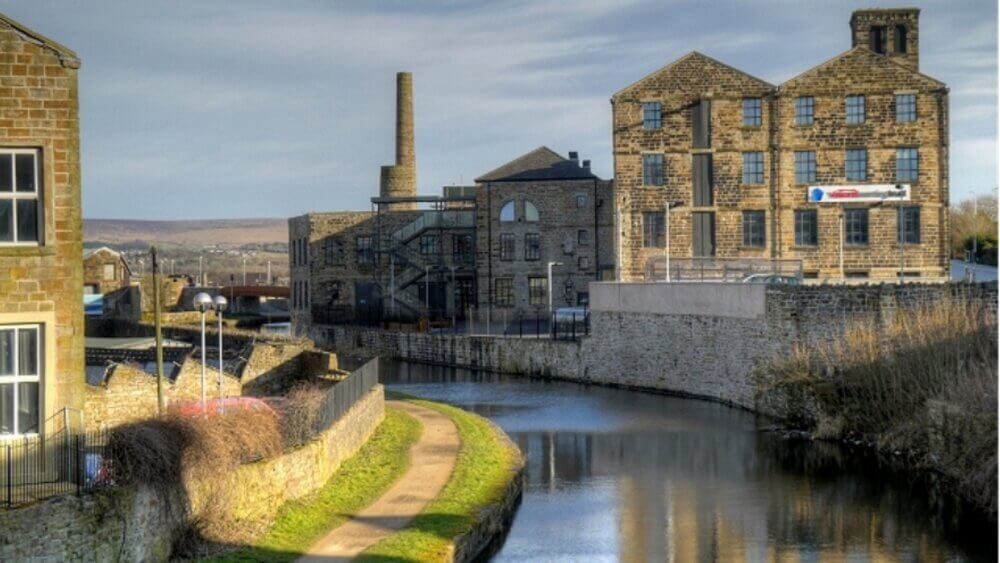
Brun Valley Forest Park
This expansive park features a network of trails through woodlands, meadows, and along the River Brun, providing opportunities for a leisurely stroll or a more energetic hike. Brun Valley Forest Park is situated on the outskirts of Burnley, adjacent to the town’s residential areas. It covers approximately 113 hectares of woodland, meadows, and waterways. The forest park features a network of well-marked nature trails that weave through the woodlands and meadows, providing opportunities to explore the natural beauty of the area. These trails cater to various fitness levels and can be tailored to individual preferences. One of the main highlights of the park is the scenic riverside walk along the banks of the River Brun. This peaceful trail offers picturesque views of the flowing water and surrounding greenery. Brun Valley Forest Park is home to a diverse range of wildlife, including birds, mammals, and insects. Keep an eye out for bird species such as kingfishers, herons, and woodpeckers. The park is also abundant in wildflowers, providing a vibrant display during the blooming seasons. The park provides designated picnic areas and seating where visitors can take a break, enjoy a meal, or simply soak in the serene atmosphere. There are also restroom facilities and ample parking available for visitors’ convenience. Brun Valley Forest Park features play areas equipped with play equipment, making it a family-friendly destination. Children can enjoy swings, climbing frames, and other recreational facilities. The forest park offers cycling and mountain biking trails, catering to different skill levels. Cyclists can explore the park’s pathways and woodland tracks, immersing themselves in the natural surroundings. Brun Valley Forest Park is a popular destination for dog walkers. Visitors are welcome to bring their dogs, but they must be kept on a leash and owners are responsible for cleaning up after their pets. The park provides opportunities for outdoor exercise and fitness activities. With its open spaces and trails, visitors can engage in jogging, running, yoga, or simply enjoy a brisk walk while surrounded by nature. Brun Valley Forest Park hosts various events and community activities throughout the year, including guided walks, nature workshops, and seasonal celebrations. These events offer additional opportunities to engage with the park and its surroundings.
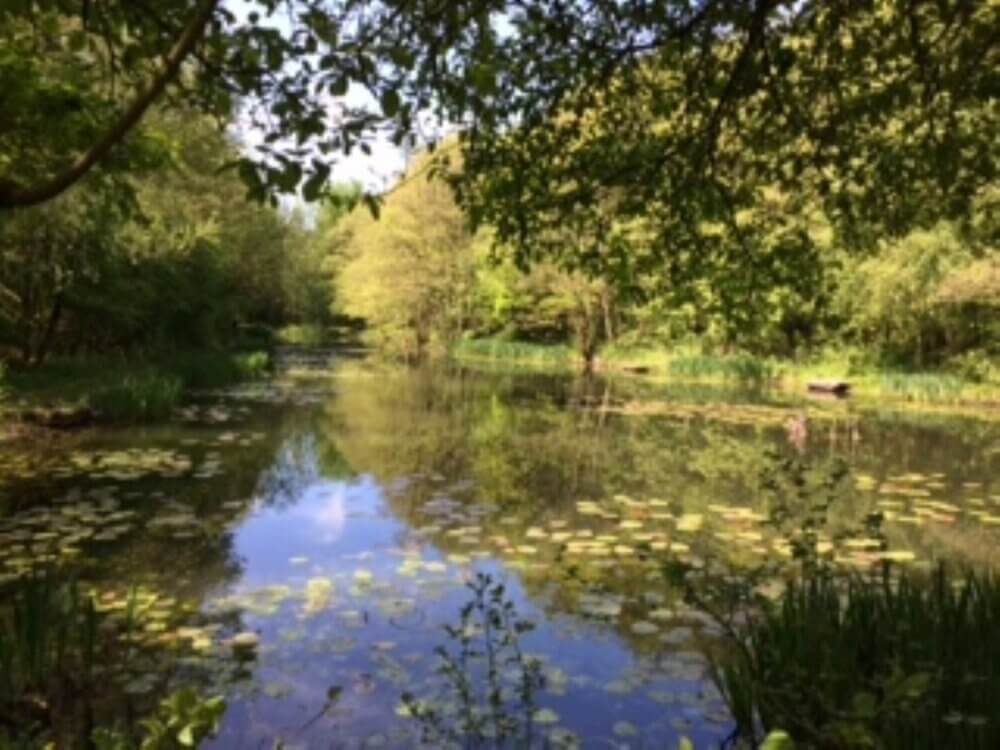
Thompson Park and Queen's Park Circular
Combine two of Burnley’s popular parks in this circular walk, taking you through Thompson Park’s landscaped gardens and Queen’s Park’s open spaces, with beautiful views of the surrounding countryside. Thompson Park and Queens Park are located in Burnley, Lancashire, England. Thompson Park is situated in the Briercliffe area of Burnley, while Queens Park is closer to the town centre. Thompson Park is a picturesque green space with beautiful flowerbeds, well-maintained lawns, and a tranquil lake. It features a range of facilities, including a cafe, playgrounds, tennis courts, and a boating lake. Queens Park is a Victorian-era park known for its formal gardens, ornamental features, and a large boating lake. The park offers amenities such as a cafe, a miniature railway, and sports facilities. The Thompson Park and Queens Park Circular walk typically starts and ends at Thompson Park. The circular route takes you through both parks, allowing you to explore their unique features and enjoy the green surroundings. As you walk through both parks, you’ll have the opportunity to enjoy scenic views of the lakes. The lakes provide a peaceful setting and are often home to ducks, swans, and other waterfowl. Queens Park is particularly renowned for its formal gardens, featuring well-manicured flowerbeds, sculptures, and ornamental features. Take some time to appreciate the floral displays and the attention to detail in the design. Both Thompson Park and Queens Park offer playgrounds for children to enjoy. Additionally, Queens Park provides sports facilities such as tennis courts and a bowling green for those interested in outdoor activities. Both parks have cafes where you can grab a snack, enjoy a cup of tea, or take a break during your walk. It’s a great opportunity to relax and refuel amidst the natural surroundings. The Thompson Park and Queens Park Circular walk is generally suitable for all fitness levels. The paths within the parks are well-maintained and accessible. However, it’s always a good idea to wear comfortable footwear and dress appropriately for the weather.
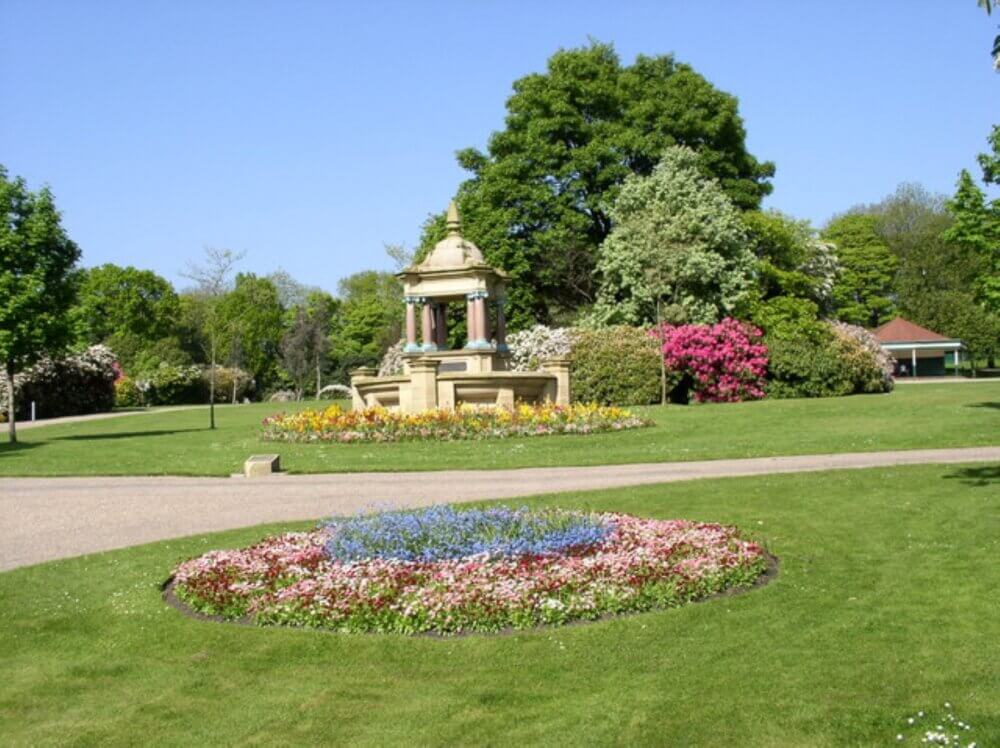
Cliviger Gorge and Thursden Valley
Explore the scenic Cliviger Gorge, with its woodland paths, waterfalls, and river, followed by a picturesque walk through the peaceful Thursden Valley. The walk is situated in the Cliviger area, south of Burnley, and takes you through the Cliviger Gorge and Thursden Valley, which are part of the South Pennines landscape. The circular walk is approximately 5 miles long (8 kilometres). The duration of the walk can vary depending on your pace and stops along the way but generally takes around 2-3 hours to complete. The walk starts at the Cliviger Gorge car park and takes you through the wooded Cliviger Gorge. The gorge is known for its dramatic rock formations, cascading waterfalls, and lush vegetation, creating a picturesque and tranquil environment. From Cliviger Gorge, the walk continues into the scenic Thursden Valley. The valley is characterized by its rolling hills, meandering streams, and open moorland, offering panoramic views of the surrounding countryside. The Cliviger Gorge and Thursden Valley are home to a variety of wildlife and plant species. Keep an eye out for birds, including peregrine falcons and curlews, as well as wildflowers and heather in the summer months. Along the route, you may come across historic features such as old packhorse bridges or ruins of former mills, adding a sense of history and heritage to the walk. The walk follows well-defined paths and trails, although some sections may be rugged and uneven. It is advisable to wear appropriate footwear and carry essential supplies such as water, snacks, and weather-appropriate clothing. Parts of the walk include steep ascents and descents, particularly in the Cliviger Gorge area. Take caution while navigating these sections and ensure you have suitable footwear for the terrain. The Cliviger Gorge and Thursden Valley offer a peaceful and secluded setting, allowing you to immerse yourself in nature and enjoy the tranquility of the countryside. Throughout the walk, you’ll be treated to breathtaking views of the surrounding hills and valleys. Bring your camera to capture the stunning landscapes and scenic vistas along the way.
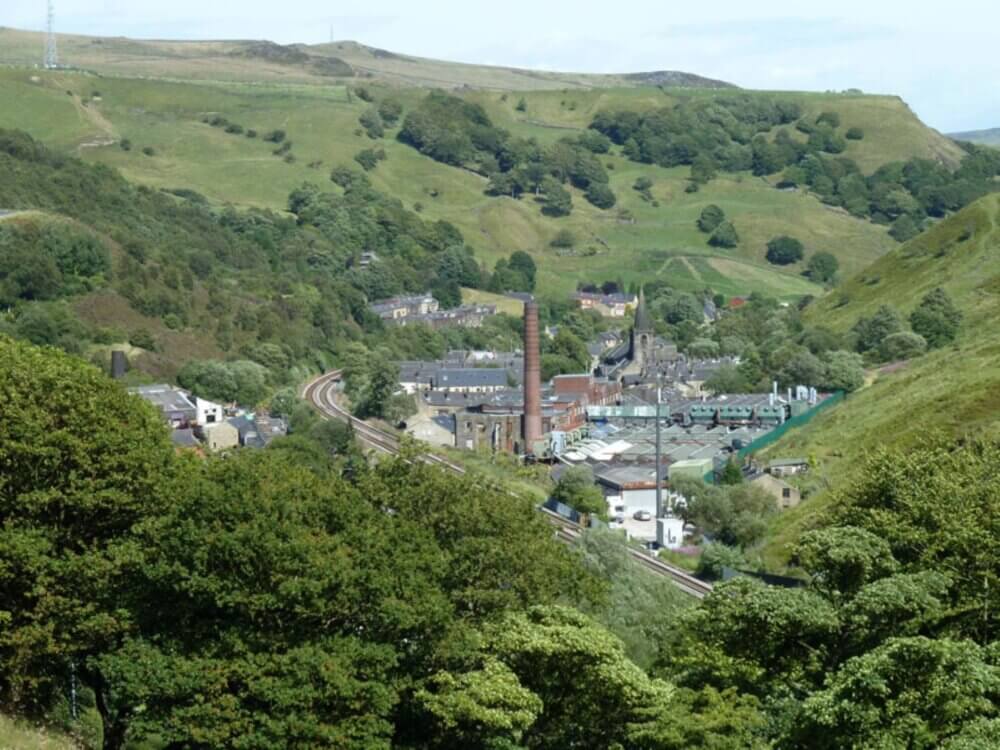
Gawthorpe Hall and the River Calder
Start your walk at Gawthorpe Hall and enjoy a peaceful riverside stroll along the River Calder, surrounded by beautiful countryside and wildlife. Gawthorpe Hall is a Grade I listed Elizabethan country house which is known for its impressive architecture, stunning gardens, and extensive art collection. Take some time to explore the hall and its grounds before beginning the walk. From Gawthorpe Hall, the walk follows the path along the River Calder. The river meanders through the surrounding countryside, offering scenic views and a peaceful atmosphere. As you walk along the river, you’ll have the opportunity to observe a variety of wildlife, including waterfowl, birds, and possibly even otters. Keep an eye out for wildflowers and other flora that adorn the riverbanks. Along the route, you may come across historic bridges that cross the River Calder. These bridges add charm and character to the walk, as well as providing great photo opportunities. The walk offers several picturesque spots along the river where you can take a break and enjoy a picnic. Find a comfortable spot, unwind, and soak in the peaceful surroundings. If you prefer not to pack a picnic, there are cafes located near Gawthorpe Hall where you can grab a bite to eat before or after your walk. These cafes offer refreshments and provide a convenient option for a meal. As you walk along the River Calder, you may notice the presence of the Leeds and Liverpool Canal nearby. The canal runs parallel to the river, adding another element of interest to the walk. Gawthorpe Hall has a rich history, and the walk allows you to appreciate its heritage while enjoying the scenic surroundings. Information boards along the route provide insights into the hall’s history and significance. Gawthorpe Hall and the River Calder offer numerous opportunities for photography enthusiasts. Capture the beauty of the hall, the river, and the surrounding landscapes as you explore the area.
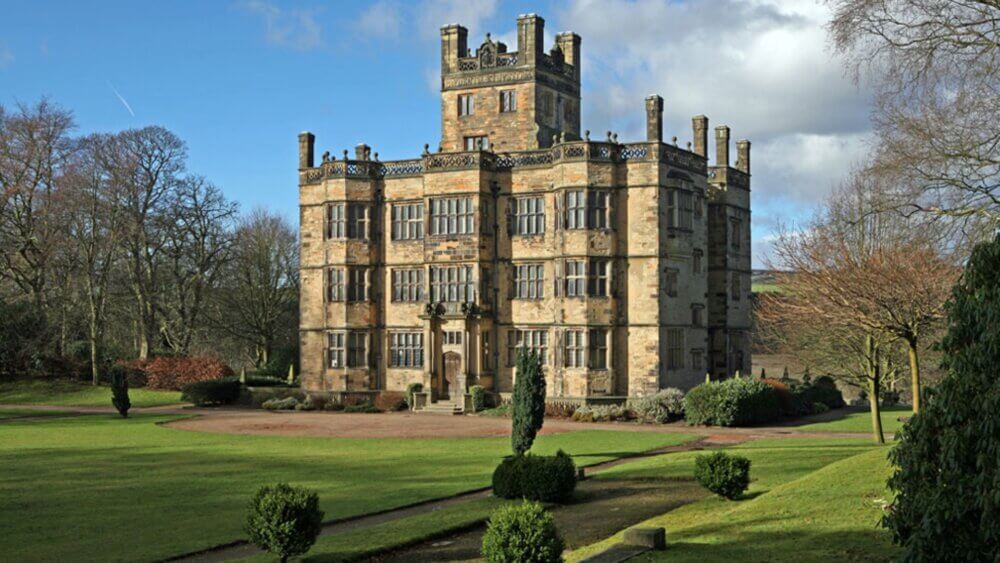
Hurstwood Reservoir Circular Walk
Discover the scenic Hurstwood Reservoir and its surrounding woodlands on this circular walk, providing opportunities for birdwatching and enjoying tranquil nature. The circular walk around Hurstwood Reservoir is approximately 3 miles long (4.8 kilometers). The duration of the walk may vary depending on your pace, but it typically takes around 1.5 to 2 hours to complete. The highlight of the walk is the scenic views of Hurstwood Reservoir. The reservoir is surrounded by lush woodland and offers picturesque vistas of the water, making it a tranquil and serene setting. The route takes you through beautiful woodland areas surrounding the reservoir. Enjoy the peaceful atmosphere, listen to the sounds of nature, and take in the beauty of the trees and vegetation. Hurstwood Reservoir and its surroundings are home to various wildlife species. Keep an eye out for birds, including ducks, swans, and other waterfowl. You may also spot woodland creatures such as squirrels and rabbits. Along the circular walk, you’ll find designated picnic areas where you can take a break, relax, and enjoy a packed lunch or snack. These spots offer lovely views of the reservoir and are perfect for a restful break. The Hurstwood Reservoir Circular Walk is a popular destination for dog walkers. Dogs are welcome but must be kept on a leash and under control at all times. Remember to clean up after your pet to help maintain the cleanliness of the area. The walk around Hurstwood Reservoir offers a peaceful and tranquil escape from the hustle and bustle of daily life. It provides an opportunity to immerse yourself in nature, enjoy the fresh air, and relax in a beautiful setting. The path around Hurstwood Reservoir is relatively flat and well-maintained, making it suitable for most fitness levels. However, it’s always advisable to wear appropriate footwear and take caution on any uneven surfaces. The scenic views, natural beauty, and wildlife around Hurstwood Reservoir present excellent photo opportunities. Don’t forget to bring your camera to capture the stunning landscapes and the serenity of the reservoir.

Wycoller Circular Walk
Venture slightly beyond Burnley to the charming village of Wycoller, where you can explore its historic packhorse bridge, ruins, and surrounding countryside on a circular walk. The circular walk around Wycoller is approximately 4 miles long (6.4 kilometres). The duration of the walk can vary depending on your pace and stops along the way but generally takes around 2-3 hours to complete. Wycoller is known for its historic charm and preserved buildings. The walk takes you through Wycoller Country Park, which encompasses the village and its surrounding countryside. The park offers beautiful landscapes, including meadows, woodlands, and streams. One of the highlights of the walk is the iconic packhorse bridge that crosses the River Wycoller. This ancient bridge adds character to the village and provides a great photo opportunity. Wycoller is often associated with the Brontë sisters, who were inspired by the area and its surroundings. The village is said to have served as a model for the fictional village of Ferndean in Charlotte Brontë’s novel “Jane Eyre.” As you explore the village, you can visit the ruins of Wycoller Hall. The remnants of this historic manor house offer a glimpse into its past grandeur and add a sense of mystery to the surroundings. The walk follows the path along Wycoller Beck, a picturesque stream that meanders through the village. The beck creates a tranquil ambiance and adds to the scenic beauty of the area. The Wycoller Circular Walk is part of the Brontë Way, a long-distance trail that connects locations associated with the Brontë family. Walking this route allows you to follow in the footsteps of the famous literary family. Wycoller offers designated picnic areas where you can enjoy a packed lunch or snack amid the natural surroundings. Additionally, there are tearooms in the village where you can stop for refreshments or a light meal.
